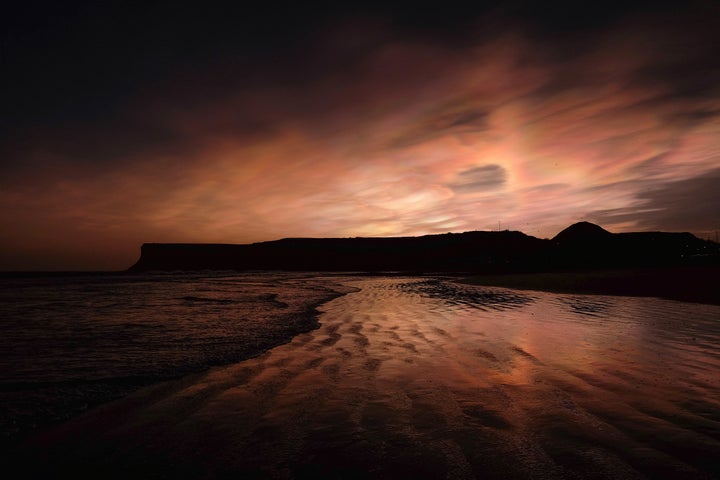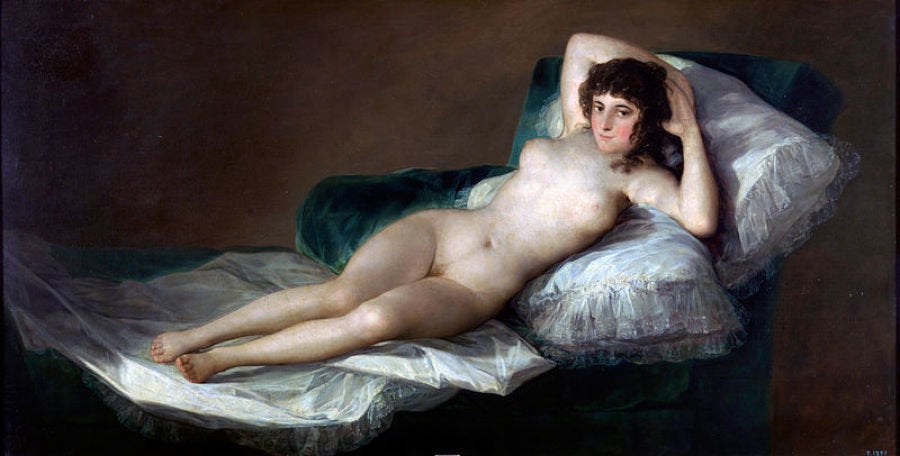Between the late 1800s and early 1900s, artist Edvard Munch created four versions of his magnum opus “The Scream,” which depicts a man enduring extreme psychological anguish while alone on a bridge beneath a raging blood-red sky. One “Scream” artwork broke auction records in 2012 when it sold for nearly $120 million.
For centuries art historians and enthusiasts have understood the tempestuous weather conditions depicted in the work as a symbolic representation of existential dread, as experienced by one very pale, very bald man.
But during a talk held Tuesday at the European Geosciences Union (EGU) General Assembly in Vienna, the University of Olso’s Dr. Helene Muri posited that perhaps Munch wasn’t painting stomach-churning angst at all, but simply crazy clouds.

Specifically, Dr. Muri suggested that Munch had witnessed the rare weather phenomenon known as nacreous clouds, mother-of-pearl clouds or “screaming clouds” ― quite appropriately. The unusual condition forms in extremely cold temperatures (minus 80 to 85 degrees Celsius) at very high altitudes (between nine and 12 miles), combined with a bit of humidity.
The resulting clouds, which only manifest at sunset or after dark, appear like thin, wriggling waves in pronounced colors. “You get these very distinct colorings,” Muri explained, “from the combination of scattering, diffraction and internal refraction of the sunlight on these tiny ice crystals.”
The clouds likely adopted their reddish hue thanks to the eruption of the Krakatoa volcano, which occurred nine years before Munch painted his first “Scream” in 1893. Yet volcanic fallout remains in the air for years after a massive eruption, and can yield sunsets with palettes resembling fiery explosions.
This explanation fits with how Munch described the shocking sky in his 1890 journal:
“The sky suddenly became bloodish red. I stopped, leant against the fence, tired to death ― watched over the flaming clouds as blood and sword the city ― the blue-black fjord and the city ― My friends went away ― I stood there shivering from dread ― and I felt this big, infinite scream through nature.”
“We do know that there were mother-of-pearl clouds in the Oslo area in the late 19th century,” Dr. Muri told The Telegraph. Although Muri has lived in the Oslo region for 25 years, she’s only seen the Mother of Pearl clouds once herself. The researcher imagines that if Munch saw the crimson display on a random evening, he would have understandably flipped out.
“Today the general public has a lot more scientific information but you can imagine back in his day, he’d probably never seen these clouds before,” Dr. Muri told The BBC. “As an artist, they no doubt could have made quite an impression on him.”
Whether or not Munch was actually inspired by a rare meteorological event or some sort of internal panic attack ― or a little bit of both ― we’ll probably never know for sure. But it’s always fun to add another “Scream” hypothesis to the vault, especially one that involves something as weird and terrifying as “screaming clouds.”


